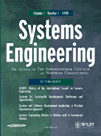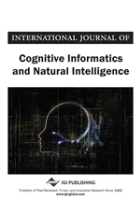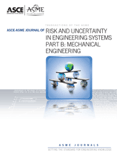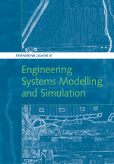
Systems Engineering
Scope & Guideline
Innovating Solutions for Complex Engineering Challenges
Introduction
Aims and Scopes
- Model-Based Systems Engineering (MBSE):
A core area of focus, MBSE emphasizes the use of models to support system requirements, design, analysis, and verification, facilitating better communication among stakeholders and improving system quality. - Interdisciplinary Applications:
The journal publishes research that crosses various fields, including aerospace, transportation, and public policy, showcasing how systems engineering principles can be applied across different domains. - Human Systems Integration:
Research on integrating human factors into system design is prevalent, highlighting the importance of user-centered approaches and human readiness in the development of complex systems. - Digital Engineering and Cyber-Physical Systems:
There is a significant emphasis on digital transformation, including the use of digital twins and other digital engineering techniques to enhance system lifecycle management and operational efficiency. - Risk and Resilience in Systems:
The journal explores methodologies that assess and enhance the resilience of systems, particularly in the context of complex and dynamic environments. - Innovation and Emerging Technologies:
Research that addresses the incorporation of new technologies, such as AI and machine learning, into systems engineering practices is a notable focus, reflecting the journal's commitment to advancing the field.
Trending and Emerging
- Integration of Artificial Intelligence and Machine Learning:
There's a noticeable increase in research that integrates AI and machine learning techniques into systems engineering processes, enhancing decision-making, predictive analytics, and system optimization. - Sustainability and Green Systems Engineering:
Emerging themes focus on sustainability, including the engineering of green systems and the assessment of environmental impacts, responding to global calls for more sustainable practices in technology and infrastructure. - Cybersecurity in Systems Engineering:
With the rise of digital systems, there is a growing emphasis on incorporating cybersecurity measures into systems engineering, ensuring that systems are resilient against cyber threats. - Human-Centric Systems Design:
Research focusing on human factors and user experience is gaining traction, emphasizing the importance of human-centered design in the development of complex systems. - Complex Adaptive Systems and Resilience Engineering:
There is an increasing interest in understanding complex adaptive systems and developing methodologies that enhance resilience in dynamic environments, reflecting contemporary challenges faced by systems engineers. - Digital Twin Technologies:
The application of digital twin technologies to monitor, simulate, and optimize system performance throughout the lifecycle is becoming a prevalent theme, showcasing the intersection of physical and digital domains.
Declining or Waning
- Traditional Systems Engineering Methods:
There seems to be a waning interest in conventional systems engineering methodologies, as more researchers focus on innovative, model-based approaches that leverage digital tools and data analytics. - Sector-Specific Applications:
Research that focuses narrowly on specific sectors (e.g., traditional manufacturing) appears to be decreasing, as the field trends towards more integrated, cross-sector solutions that address broader systems challenges. - Static Frameworks and Standards:
Studies centered around rigid frameworks and standards without adaptability to emerging technologies are becoming less frequent, as the community increasingly values agile and dynamic approaches to system design. - Purely Theoretical Studies:
The journal is moving away from purely theoretical explorations of systems engineering principles towards more applied research that demonstrates practical impacts and real-world applications.
Similar Journals

International Journal of Cognitive Informatics and Natural Intelligence
Exploring the Nexus of Mind and MachineThe International Journal of Cognitive Informatics and Natural Intelligence, published by IGI Global, is an essential resource for researchers and professionals exploring the intersections of cognitive informatics, artificial intelligence, and human-computer interaction. Since its establishment in 2007, this journal has focused on advancing the understanding of cognitive systems and their applications in natural intelligence, contributing significantly to the fields of software engineering and interface design. Operating out of the United States, the journal aims to disseminate high-quality research and innovative methodologies to foster interdisciplinary collaboration. Despite its current standing in Q4 quartiles for the fields of Artificial Intelligence, Human-Computer Interaction, and Software, it serves as a vital platform for emerging scholars and seasoned professionals alike seeking to explore new frontiers in cognitive technologies. While it does not provide direct open access, these publications are instrumental in shaping academic discourse, and contribute to ongoing advancements in how we understand and integrate cognitive science into practical applications.

Journal of Industrial Information Integration
Empowering Research in Information Systems and EngineeringThe Journal of Industrial Information Integration, published by Elsevier, stands at the forefront of scholarly research in the fields of Industrial and Manufacturing Engineering and Information Systems and Management. With an ISSN of 2467-964X and an E-ISSN of 2452-414X, this esteemed journal provides a vital platform for disseminating innovative findings that bridge the gap between industry and academia. It is a recognized leader in its category, boasting a Q1 Quartile ranking in both relevant fields, reflecting its high-impact scholarly contributions. Notably, it ranks 3rd out of 148 in Decision Sciences and 7th out of 384 in Engineering disciplines on the Scopus rank, highlighting its significant influence within the research community. Researchers, professionals, and students engaged in the transformation of industrial practices through information integration will find this journal indispensable for accessing cutting-edge studies, methodologies, and case analyses. Operating under a closed access model, the journal also encourages submission of articles that contribute to advancing the theoretical and practical understanding of integrated industrial information systems, thus fostering innovation and progressive thinking in the field.

ASCE-ASME Journal of Risk and Uncertainty in Engineering Systems Part B-Mechanical Engineering
Innovating Risk Assessment for Engineering ExcellenceASCE-ASME Journal of Risk and Uncertainty in Engineering Systems Part B-Mechanical Engineering, published by the reputable ASME, is a leading platform dedicated to advancing knowledge in the field of mechanical engineering with a particular emphasis on risk assessment and uncertainty analysis. With an ISSN of 2332-9017 and an E-ISSN of 2332-9025, this journal has established itself as a significant contributor to ongoing research in safety, risk, and reliability, consistently ranking in the Q2 quartile for Mechanical Engineering as well as Safety Research categories. As evidenced by its impressive Scopus rankings—including a notable 80th percentile in Safety Research—this journal fosters high-quality research that informs engineering practices and enhances safety protocols. Operating under a traditional access model, it aims to provide researchers, professionals, and students with essential insights and methodologies to address contemporary challenges in engineering systems. Each contribution reflects an aim to bridge theory and application, thus making the journal an invaluable resource for stakeholders striving for excellence in mechanical engineering and safety management.

Journal of Transportation Engineering Part A-Systems
Advancing Transportation Systems Through Innovative ResearchThe Journal of Transportation Engineering Part A-Systems, published by the American Society of Civil Engineers (ASCE), is a cutting-edge, peer-reviewed journal dedicated to the advancement of knowledge in the field of transportation systems. With an ISSN of 2473-2907 and an E-ISSN of 2473-2893, this journal serves as a crucial resource for researchers, professionals, and students interested in the intricate interplay between civil engineering and transportation networks. Boasting a Q2 ranking in both the Civil and Structural Engineering and Transportation categories, this journal reflects the high-quality research contributing to these vital disciplines. Accessible through open-access options, the journal provides a platform for innovative ideas and research findings from 2017 to 2024, aiming to address contemporary challenges in transportation systems while fostering interdisciplinary collaboration. As an essential outlet for scholarly work in the United States and beyond, the Journal of Transportation Engineering Part A-Systems is committed to enhancing the understanding of complex transportation dynamics and the development of sustainable and efficient infrastructures.

Mechatronic Systems and Control
Unlocking New Frontiers in Interdisciplinary EngineeringMechatronic Systems and Control is a prestigious journal published by ACTA PRESS, dedicated to the advancing fields of mechatronics, control systems, and their various applications. Established in 2018, this journal serves as a vital platform for researchers and professionals to disseminate innovative findings that bridge the gap between mechanical engineering, electronics, computer science, and control systems. With an ISSN of 2561-1771 and an E-ISSN of 2561-178X, it operates from Canada’s vibrant academic environment, specifically from Calgary, Alberta. Although it is indexed in lower quartiles in 2023 in the fields of Computer Science Applications and Control and Systems Engineering, it presents an opportunity for emerging scholars to contribute and enhance their visibility in this interdisciplinary field. As a strictly non-open access journal, Mechatronic Systems and Control provides subscription-based access which ensures high-quality content delivery. This journal is instrumental for those pursuing advancements in technological convergence and represents an essential resource for academics and students alike seeking to understand the complexities of modern control systems.

KYBERNETES
Innovating Through Research: Your Gateway to CyberneticsKYBERNETES is a leading peer-reviewed journal published by Emerald Group Publishing Ltd, focusing on the interdisciplinary fields of Artificial Intelligence, Computer Science, Control and Systems Engineering, and related domains. Since its inception in 1972, KYBERNETES has established itself as a vital resource for researchers and practitioners, offering insights into the theoretical and practical aspects of cybernetics and its applications. With a notable impact factor reflected in its impressive Q1 and Q2 rankings across various categories, including Social Sciences and Electrical and Electronic Engineering, the journal is recognized for its contribution to advancing knowledge and fostering innovation within these fields. KYBERNETES appeals to a diverse audience, ranging from seasoned professionals to budding students, providing a rich platform for disseminating high-quality research and practical findings. While the journal is not open access, it offers comprehensive subscription options, ensuring that critical information is accessible to those engaged in these rapidly evolving disciplines.

Applied System Innovation
Catalyzing Progress in Multidisciplinary FieldsApplied System Innovation is a leading multidisciplinary journal published by MDPI, dedicated to advancing the fields of applied mathematics, artificial intelligence, control systems, human-computer interaction, and industrial and manufacturing engineering. With an impressive Open Access model established since 2018, it ensures that research findings are readily accessible to a global audience, fostering collaboration and innovation. The journal, boasting a robust impact in academia, has achieved multiple distinguished quartile rankings for 2023, including Q1 in Industrial and Manufacturing Engineering and Q2 in several other key disciplines. It is recognized in various Scopus categories, with notable rankings in applied mathematics and control systems. By encouraging high-quality research and providing a platform for knowledge exchange, Applied System Innovation plays a vital role in shaping the future of technology and engineering solutions. We invite researchers, professionals, and students alike to contribute to this dynamic field through impactful publications that inspire advancements in our understanding of complex systems.

International Journal of Engineering Systems Modelling and SImulation
Connecting Researchers to the Cutting Edge of Systems ModellingInternational Journal of Engineering Systems Modelling and Simulation, published by InderScience Enterprises Ltd, serves as a pivotal platform for sharing innovative research in the fields of engineering and simulation methodologies. With a focus on bridging theoretical frameworks and practical applications, this journal holds a notable position within the academic community, as evidenced by its Q3 ranking in Engineering and Q4 ranking in Modeling and Simulation categories in 2023. The journal is indexed in Scopus, spanning critical advancements from 2008 to 2024, thus ensuring that researchers and practitioners remain at the forefront of evolving technologies and methodologies. While lacking Open Access options, it continues to engage readers with its compelling content, addressing complex systems engineering challenges and fostering interdisciplinary collaboration essential for the development of sustainable and efficient engineering solutions. This journal is vital for academics, engineers, and students looking to contribute to and learn from emerging trends in systems modeling and engineering simulation.

Bulletin of the New Zealand Society for Earthquake Engineering
Fostering knowledge for a resilient future against seismic challenges.Bulletin of the New Zealand Society for Earthquake Engineering (ISSN: 1174-9857, E-ISSN: 2324-1543) is a leading scholarly journal published by the New Zealand Society for Earthquake Engineering, Inc., dedicated to advancing the field of earthquake engineering. Since its inception in 1970, the journal has provided a vital platform for the dissemination of innovative research, technical studies, and case reports related to civil and structural engineering, as well as geotechnical engineering and engineering geology. Recognized for its significant contributions, the journal holds a Q2 ranking in both the Civil and Structural Engineering and Geotechnical Engineering and Engineering Geology categories as of 2023. It serves as an invaluable resource for researchers, professionals, and students keen on enhancing their understanding of earthquake resilience and engineering practices. While the journal operates under subscription-based access, its rigorous peer-review process ensures that published articles meet the highest academic standards, making it a credible source for the global engineering community.

ANNUAL REVIEWS IN CONTROL
Unveiling critical insights in Control and Software Innovation.ANNUAL REVIEWS IN CONTROL, published by PERGAMON-ELSEVIER SCIENCE LTD, is a premier journal specializing in the fields of Control and Systems Engineering as well as Software. With its distinguished Q1 ranking in both categories for 2023, the journal ranks 9th in Control and Systems Engineering and 19th in Software according to Scopus, reflecting its authoritative voice and significant impact with a remarkable 97th and 95th percentile respectively. Since its inception in 1996, this journal has become an essential resource for researchers, professionals, and students alike, providing comprehensive and critical reviews that stimulate academic discourse and innovation. Although the journal does not currently operate under an Open Access model, it features in-depth studies and analyses that are pivotal in advancing knowledge in control systems and software engineering. This makes ANNUAL REVIEWS IN CONTROL a vital reference for anyone looking to stay abreast of cutting-edge developments in these dynamic fields.